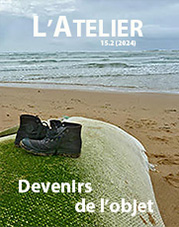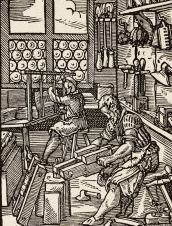The Uncanny Domestic Objects of “Choseville” (Villette, Charlotte Brontë, 1853)
Abstract
This paper considers the role of objects or “things” in Villette, a novel published after the 1851 Universal Exhibition in which the flamboyant romanticism of Jane Eyre (1847) has given way to a form of ardent realism concerned with materiality. In relation to domestic objects, embroidered, sewn or painted by female characters – dresses, hand-screens, a pincushion and a watch-guard – this paper will examine the role that a certain type of material culture plays in the novel. Villette is marked by its central character’s considerable difficulty in expressing private emotions, which is reflected by Brontë’s engagement with the text/textile analogy in the novel. Since Lucy Snowe, the narrator and heroine, makes the things in question herself, scholars have convincingly argued that objects materialise aspects of the heroine’s fragmented psyche which can be reconstructed or interrogated if things are understood as metaphors. This reading may however be extended for while Brontë uses embroidered, sewn or painted objects as symbols of intimacy, she also places them in competition with human subjects and language. Villette thus seems to reject the binary opposition between subject and object and to show how the latter exercises authority over the former. Material culture operates as a deflective mechanism, altering the trajectory of the novel in reifying, even creating, human beings. Brontë moves beyond animism as things become fetishized, acting as repositories of a story that will remain unspoken and unknown. For Lucy the power of domestic objects oscillates between their ability to protect and threaten. She shelters among them but ultimately becomes a thing herself.
Key-words: Charlotte Brontë, Villette, object, thing, domestic handicraft, animism, fetishism
Downloads
Published
Issue
Section
License
- Work submitted for publication must be original, previously unpublished, and not under consideration for publication elsewhere. If previously published figures, tables, or parts of text are to be included, the copyright-holder's permission must have been obtained prior to submission.
- Authors of accepted manuscripts will assign to L'Atelier the right to electronically distribute their article, or publish it in any form (Internet, CD ROM, printed copy) but authors will retain copyright and, after the article has appeared in L'Atelier, authors may republish their text (in print and/or electronic form) as long as they clearly acknowledge L'Atelier as the original publisher.


